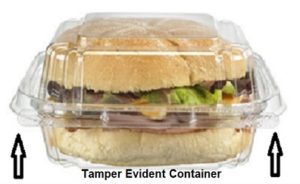 Do you spend more of your doctor’s appointment time in the waiting room instead of the exam room? Blame the insurance companies and insurance reimbursement. Insurance reimbursement is the payment that your doctor, hospital, or other health service providers receive for providing you with a medical service. The insurers’ service comes with restrictions, and many tend to pay health service providers only enough for 15-minute appointments.
Do you spend more of your doctor’s appointment time in the waiting room instead of the exam room? Blame the insurance companies and insurance reimbursement. Insurance reimbursement is the payment that your doctor, hospital, or other health service providers receive for providing you with a medical service. The insurers’ service comes with restrictions, and many tend to pay health service providers only enough for 15-minute appointments.
In addition to imposing time limits on patient visits, insurance providers are increasingly refusing to cover prescribed treatments for numerous patients, including those with chronic illnesses, even though many cannot afford the out-of-pocket costs. While astute patients know that their doctor is not solely to blame when necessary treatment is denied, less informed patients may be unaware that insurance companies are sometimes instrumental in limiting access to care. Both patients and their health care providers are at the mercy of the insurers.
A few years ago, I asked my Ophthalmologist for a prescription so that I could buy an additional pair of reading glasses. I had purchased a pair a few months earlier, but no longer had that prescription. She said that she couldn’t write it because my insurance would not approve another pair of glasses so soon after my previous purchase. I said that I – not the insurance company – would pay for the glasses myself, (just as I did with the original pair). She said that it didn’t matter; she still could not write another prescription so soon. What kind of jacked-up rule is that? I thought. It made no sense to me, but I didn’t press the matter. Insurance companies certainly have an arm lock on medical service professionals.
The days of private practices where doctors have the authority to make autonomous decisions for their patients without interference from insurers are becoming a thing of the past.
The shift from the time needed – for an exam and treatment – to 15-minute sessions occurred as a result of changes in how insurance companies and the government pay physicians for medical care.
In 1992, Medicare decided to adopt the RVU (relative value unit) formula as a standard way to calculate doctor’s fees. Then in 2010 came the Affordable Care Act. In conjunction with other significant changes, increasingly, doctors were required to document their patients’ information on a computer causing them to spend more time with their laptops than with their patients. I witnessed the angst this causes first-hand while visiting my primary care physician shortly after her manila folder files became digital. Dr. Kaye (name changed to protect her privacy) has been my doctor for 35 years.
The first few times, when she used a computer to check data pertinent to my history or previous visits I could see that she was agitated. On one occasion, she called her assistant in to help her. On my follow-up visit, she struggled to do it alone.
“I have to get used to documenting information this way,” she said, almost apologetically while I sat patiently in the chair beside her desk.
“Don’t like computers?” I asked curiously.
“Never used one until recently,” she replied. “So many changes in recent years. Okay, I’ve got your chart now. Let’s go over this.”
The time-limit/payment procedure is unknown to numerous patients who often don’t understand why they feel like they are being rushed through appointments and exams, whether they visit their primary doctor, hospitals, or clinics. Physicians feel the time crunch too as they hurry through appointments to see more patients. Some perform additional tests and procedures to make up for flat or declining reimbursements. In addition to time restraints, other factors tied to regulations instituted a few years ago, takes a toll on the doctor/patient relationship, and is forcing many physicians to give up their solo practice and join group practices.
I’ve had personal experience with this also. Two doctors’ who I’ve been with for nearly half of my life have abandoned their private practices and joined a group facility. Two years ago, my eye doctor gave up her solo practice, and then last year my primary care physician, Dr. Kaye, did the same thing.
I’ve had the same primary care physician for 38 years. When I began visiting her she was the sole doctor in her privately owned practice. She rarely seemed hurried and took time to thoroughly answer any questions I might ask. Sometimes during my exam, we even chatted briefly about non-health related issues like how my then infant twin grandsons were doing – learning to crawl or being potty-trained – or how her daughter was progressing with her singing career.
Then, a few years ago, things changed. I noticed that although she willingly answered any questions, our unnecessary dialog had practically stopped. She was still the smiling, personable person that she has always been, but she often seemed to be rushing. It wasn’t long before her assistant, who takes blood and handles other incidentals, was notably absent, and we patients were sent elsewhere for lab work.
One day I mentioned that her waiting room was more crowded than it normally is and asked Dr. Kaye if she was seeing more patients than usual. Without going into lengthy details, she said that insurance company policies and restrictions were causing doctors’ to change some of their previous methods of operation.
According to studies, more doctors who, like Dr. Kaye, once had private practices, are joining group practice facilities where two or more physicians all provide medical care within the same facility. Doctors working in a group practice experience the advantage of shorter work hours, more flexibility in scheduling, and increased financial security. The larger number of physicians and increased patient base makes it easier for doctors to manage financial risks than private practices. Group facilities also usually have the resources to better manage the administrative tasks associated with running a practice. The disadvantage is that group practices tend to be more bureaucratic. Doctors have less independence, lack of the ability to develop close, personal relationships with their patients and staff, and often require a consensus on business decisions; while the private practitioner has autonomy and the advantage of more personal freedom to develop his or her practice as they would like.
According to the American College of Physicians, “Solo practices are often at substantial financial risk due to the costs of doing business (such as hiring staff and maintaining malpractice coverage)… [There is also] the small patient base, shifting patient allegiances because of insurance issues, and lost income caused by illness or vacation.”
Occasionally, when am in the waiting room, I get into a conversation with another patient who, like me, followed our doctors from private practice to a group facility or hospital. There seems to be a consensus that most “transplanted patients” are dissatisfied with the new arrangement. The wait time is often much longer than before, and the personal attention and the quality of care have changed.
Most frustrating are the times when I’ve called to make an appointment or ask my doctor a question, and the phone goes unanswered even though I make the call during the doctor’s regular business hours. The next worse thing to the unanswered phone is the voice mail that requires callers to navigate an agitating phone tree that asks that we press what seems like 101 buttons only to ultimately be told to (1) leave a message. (My experience has been that the call never gets returned and I wonder if anyone even bothers to check the messages) or (2) that the voice mailbox is full.
Studies show that the number of physicians who own private practices is dwindling, mainly due to transformational changes, and group facilities that are actively looking to purchase the remaining practices.
In a July 2015 report, Accenture predicted that a growing number of U.S. doctors would leave private practice for group or hospital employment by the end of 2016.
Family physician Dr. Linda Girgis explains it this way, “As self-employed doctors, we are not only responsible for all the patients in our practice, we are also responsible for the business. Tax laws and accounting principles are foreign languages to many doctors. And new regulations are aimed at decimating those remaining at the reins of their own medical practice.”
This fantastic video will reveal, in a nutshell, how some doctors feel about insurance restrictions and what they are doing about it.




